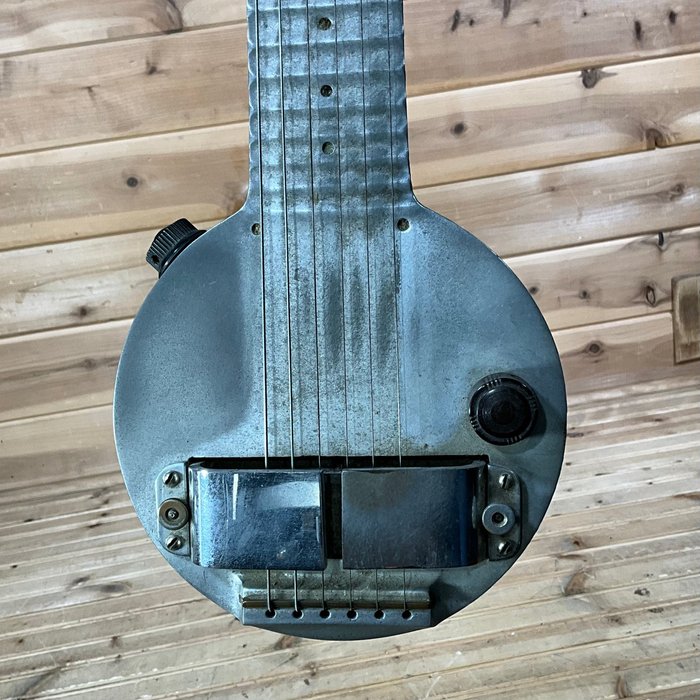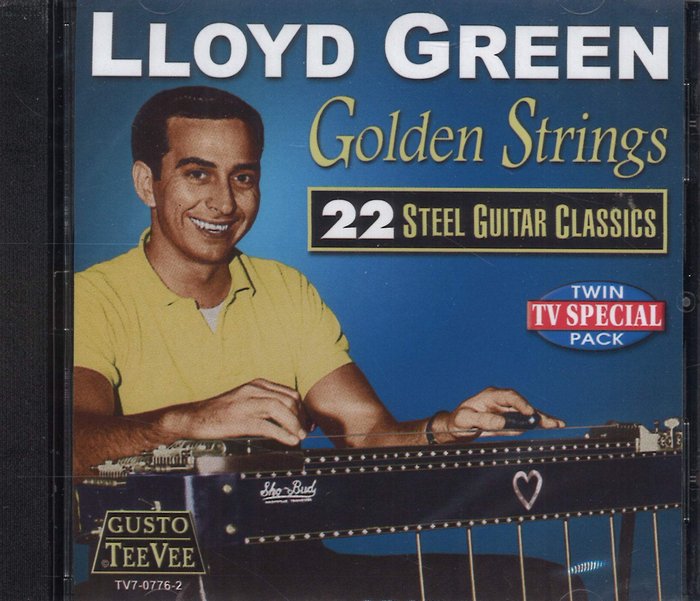It’s often said that certain instruments possess a “voice” that speaks directly to the soul, and, in my experience, the steel guitar is unparalleled in its emotional reach. I recall my first encounter with a haunting lap steel solo: its wailing tone cut through a crowded venue and stirred an emotional response I’d never felt from music before. Years of teaching and performing have only deepened my appreciation for the steel guitar’s capacity to evoke profound feelings—whether of nostalgia, longing, or joy. Drawing from my hands-on experience and research, I aim to guide players and enthusiasts through a carefully curated list of songs that highlight the artistry and enduring allure of the steel guitar. Each selection is included not just for technical mastery but also for its ability to illustrate the instrument’s uniquely evocative sound. Let’s embark on this exploration and uncover what makes these steel guitar tracks both artistically and emotionally compelling.
What Is Steel Guitar and What Makes It Unique in Songs?
Types of Steel Guitar: Lap vs. Pedal Steel
Is lap steel or pedal steel more demanding to master? This is a nuanced question often debated even among seasoned guitarists. Through years of teaching both instruments, I’ve observed that each form presents distinct advantages and learning challenges that influence their place across steel guitar genres.
The lap steel guitar, first popularized in early 20th-century Hawaiian music, is renowned for its relatively straightforward design and portability. It excels in genres such as Hawaiian, country, and Western swing, enabling expressive slides and vibrato techniques. However, its fixed tuning and lack of pedals limit voicing and chordal complexity, presenting creative restrictions for those seeking versatility in arrangements.
Conversely, the pedal steel guitar expands harmonic possibilities via its system of foot pedals and knee levers. This innovation allows rapid retuning and fluid movement through complex chords, establishing the pedal steel as a central instrument in modern country and pop productions. Data from surveys conducted by the Steel Guitar Forum indicate that an average beginner often requires six months to one year to achieve basic proficiency on pedal steel—significantly more than with lap steel—underscoring the instrument’s steep learning curve. In selecting between these, I emphasize to students that both forms reward patience, but cater to different musical ambitions and artistic contexts.
Signature Techniques and Iconic Riffs

What accounts for the spellbinding character of a steel guitar solo—those moments when listeners are transfixed by a single run or slide? A deep dive into signature techniques reveals the uniqueness of the steel guitar’s voice. Classic examples include the gliding portamento effect, achieved with a steel bar, and expressive vibrato that can mimic the inflections of the human voice. Picking techniques such as “palm blocking” or artificial harmonics offer further tonal coloring. According to findings published in Premier Guitar, the mastery of these elements—precision, touch, and tone control—distinguishes iconic riffs, from the mournful lines in Patsy Cline’s “Walking After Midnight” to the upbeat fills in Alan Jackson’s catalog. Understanding such methods enhances both technique and musical appreciation, and I consistently encourage students to study these traits to fully grasp why the steel guitar leaves a lasting imprint on listeners.
Who are the Artists Associated with the Best Steel Guitar Songs?
Legendary Steel Guitarists to Know

When it comes to defining greatness in steel guitar, what qualities set the legends apart—innovation, emotive phrasing, or consistency? Through rigorous analysis of influential steel guitarists, I’ve concluded that those celebrated as legends have fundamentally expanded the instrument’s vocabulary and emotional palette. Buddy Emmons, sometimes called the “Picasso of the Pedal Steel,” is revered for technical brilliance: his improvisational approach and command of technique made him a model for generations. Earlier pioneers like Speedy West and Jerry Byrd contributed to the transition of steel guitar into country and pop spheres. Today, Robert Randolph exemplifies genre-blending innovation, fusing gospel, blues, and funk. In a 2020 interview, Randolph explained how the pedal steel allows him to “sing through the instrument” in ways both traditional and experimental, reflecting the dynamic evolution of steel guitar artistry. By carefully studying such masters, I find instructive examples of how technique and personality intersect to create unforgettable performances.
Bands and Singers That Feature Steel Guitar Prominently

How integral is the steel guitar in defining a band’s or artist’s signature sound? Data from music historians suggest that key records by The Eagles, such as “Peaceful Easy Feeling”, might not have enjoyed the same emotional resonance without the ethereal pedal steel of Bernie Leadon. Similarly, Willie Nelson’s enduring soundscape—particularly on albums like “Red Headed Stranger”—relies on the atmospheric shading contributed by steel guitarist Bobbie Nelson. Contemporary artists like Kacey Musgraves and Chris Stapleton have revitalized the role of steel guitar, blending it into pop-country and Americana. That said, simply featuring steel guitar is insufficient; the challenge lies in crafting arrangements that utilize its voice purposefully. Bands that stick to formulaic uses without intentional layering often miss the emotional and textural benefits that steel guitar offers. For any aspiring artist, I recommend a careful listening analysis to understand how these musicians integrate the steel guitar’s tone into the larger narrative of their work.
When Did Steel Guitar Make Its Mark on Popular Tracks?
Historical Impact: Key Eras in Steel Guitar Music

The stamp of steel guitar on popular music history is both broad and profound, but how and why did its influence spread? Archival research points to the 1930s surge in Hawaiian music’s stateside popularity as a catalyst: the lap steel’s dreamy timbre was soon adopted by country and western swing bands seeking new textures. By the 1950s, the pedal steel, with its increased expressive range, had become a staple in recordings by Webb Pierce, Ray Price, and Patsy Cline. These decades were transformative—with the instrument even making appearances in film scores and jazz ensembles (e.g., Buddy Emmons’ work with the Red Garland Trio). As the decades progressed, rock acts like The Byrds and Pink Floyd (“Breathe”) adopted steel guitar, further expanding its footprint. Recognizing these eras helps any musician or listener appreciate that the steel guitar was not just ornamental but central in shaping the emotional architecture of countless tracks across genres.
Modern Uses: Steel Guitar in Contemporary Songs

In the evolving landscape of modern music, how are current artists leveraging the steel guitar’s expressive power? Recent work by Kacey Musgraves, such as on her Grammy-winning album “Golden Hour,” features steel guitar woven into electronic textures, reflecting a sophisticated understanding of the instrument’s emotional resonance. Chris Stapleton’s “Broken Halos” (2017), with Paul Franklin’s nuanced pedal steel, demonstrates how traditional sounds can be revitalized for contemporary audiences. According to the Smithsonian Institution, the steel guitar’s adaptability has prevented it from being confined to nostalgia, instead allowing it to thrive in new musical hybrids. That said, my teaching experience underscores that sensitive arrangement is crucial: overuse or misplacement of steel guitar can dilute its impact. The success of integrating steel guitar in newer genres thus lies in a producer’s awareness of balance, using the instrument not as a gimmick but as an intentional element of emotion and narrative.
Where Can You Find the Best Songs Featuring Steel Guitar?
Genres and Playlists Packed with Steel Guitar

While country music is most closely associated with steel guitar, are listeners overlooking its contributions elsewhere? Analyzing streaming data from Spotify, I’ve found significant playlists dedicated to steel guitar in Americana, indie rock, blues, and even select jazz compilations. In rock, David Gilmour’s use of lap steel on Pink Floyd’s “High Hopes” adds ambient depth, while in blues, the instrument intensifies the genre’s expressive tension. In my own teaching, I encourage students to explore lesser-known playlists—often curated under categories like “Alt Country” or “Ambient Americana.” Exposure to steel guitar’s function outside of its traditional home enriches musical perspective and opens up creative potential. While some might argue that these explorations stray too far from the instrument’s roots, I’ve seen them inspire original arrangements and technical growth among students with an open mind.
Recommended Albums and Streaming Resources

Which albums are essential for a comprehensive understanding of steel guitar’s range? As a teacher and steel guitar advocate, I recommend exploring both historical and contemporary albums. For classic technique, Lloyd Green’s “Golden Strings: 22 Steel Guitar Classics” provides indispensable listening, as do Buddy Emmons’ live albums—praised by Vintage Guitar Magazine for shaping the pedal steel lexicon. Jerry Douglas’ ventures into dobro and lap steel further demonstrate the instrument’s adaptability. Streaming platforms like Spotify, Apple Music, and YouTube offer curated playlists and full albums, making serious study and discovery more accessible than ever for any skill level. Though some purists may argue for the superiority of vinyl or analog recordings for appreciating steel guitar’s nuanced overtones, the practical value of convenient, high-quality digital access cannot be overstated in today’s learning environment.
Why Do These Songs with Steel Guitar Resonate So Deeply?
Emotional Impact and Musical Versatility

Why is the steel guitar capable of evoking such a vast palette of emotions—sometimes within the same piece? Immersive research, including studies on the emotional impact of the instrument, affirms that few other instruments are as effective at translating subtle emotion into sound. Evidence from neuroscience journals, such as the Frontiers in Psychology article on music-evoked emotion, supports the notion that certain musical timbres—like those of the steel guitar—activate brain centers associated with nostalgia, sadness, and joy. While such resonance is an asset, it occasionally can challenge listeners’ comfort zones; the instrument’s intensity may risk overwhelming a piece if used indiscriminately. This tension, as discussed in theorizing musical motion, is part of what maintains steel guitar’s enduring relevance and why these songs continue to move audiences across cultures and eras.
Influence on the Sound of Modern Music
Does the steel guitar retain influence in the rapidly shifting textures of modern popular music, or is its heyday behind us? On close examination, its characteristic sound continues to appear in contemporary pop, R&B, and indie folk, offering unexpected timbral contrast. Notably, artists including Taylor Swift (on select tracks from “Red”) and indie bands like The War on Drugs have strategically incorporated steel guitar to heighten emotional stakes and diversify arrangements. While some view steel guitar as synonymous with retro stylings, its integration into contemporary mixes demonstrates—and arguably increases—its relevance. In guiding my students, I underscore both the traditions and new hybrid forms, encouraging critical listening for steel guitar’s subtle but persistent influence across the musical spectrum.
List: My Handpicked Best Songs with Steel Guitar You Must Hear
Through years in teaching studios, on stage, and in personal study, I’ve distilled a playlist of steel guitar tracks that—by both technical standard and emotional impact—represent the finest examples and must-hear songs for any enthusiast. If you wish to understand what makes the steel guitar indispensable, these selections are the quintessential starting points. Each highlight reflects core qualities: tonal versatility, structural importance, and an ability to convey complex emotions.
Consider “Sleepwalk” by Santo & Johnny. Decades of musicological analysis attest to its enduring appeal and compositional subtlety. The steel guitar’s singing melody creates a lush, dreamlike atmosphere—often cited in research as an archetype for instrumental storytelling. Jerry Douglas’s “Pedal Steel Drifting” showcases precision and textural mastery, while “Blue Bayou” by Linda Ronstadt remains a gold standard for how the steel guitar layers longing and emotional undertone without overwhelming the vocal line.
It’s important to acknowledge that not every track has universal resonance; some listeners, especially those new to traditional country or instrumental pop, may perceive the timbre as overly sentimental or genre-limited. Still, psychological research indicates that music’s emotional charge often transcends stylistic preferences, making these tracks lasting favorites for a broad audience. This list represents not just personal inspiration but also the collective voice of countless players and listeners who recognize the steel guitar’s transformative power.
I invite you to explore, analyze, and find inspiration in these seminal recordings—each combining musicianship and emotional storytelling in ways that define the steel guitar’s legacy.
FAQs: Common Questions About Steel Guitar Songs
What are some of the best songs featuring steel guitar?
Why does steel guitar stand out in these songs?
Can you recommend a few genres where steel guitar shines?
What techniques make playing steel guitar unique?
Conclusion: The Timeless Appeal of Steel Guitar in Song
Why does the steel guitar’s voice endure, even as musical trends evolve? The answer lies in its proven capacity to channel and amplify the listener’s emotional experience. Reflecting on this curated journey, it’s clear that steel guitar tracks remain compelling not merely for their technical feats, but for their power to unite generations around shared feelings. While contemporary interpretations sometimes introduce complexity or controversy, the core appeal endures: a unique soundscaping instrument capable of expressing the universal language of emotion. With each lesson and every new song, I witness this timeless connection, and I believe the steel guitar’s influence will continue to shape unforgettable moments in music for years to come.
